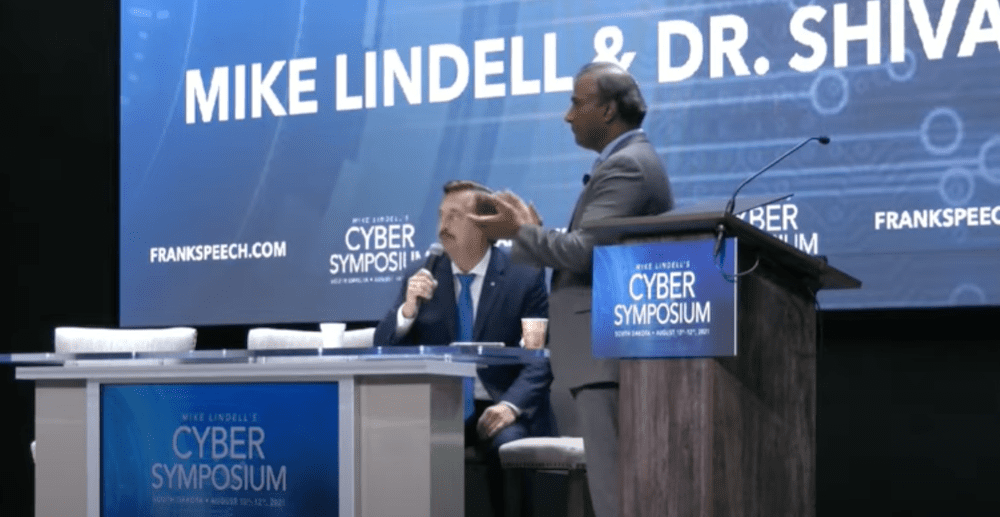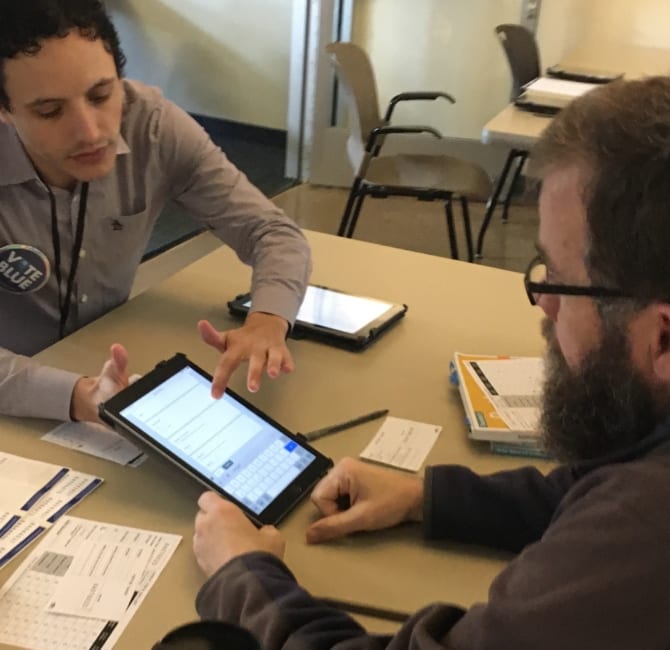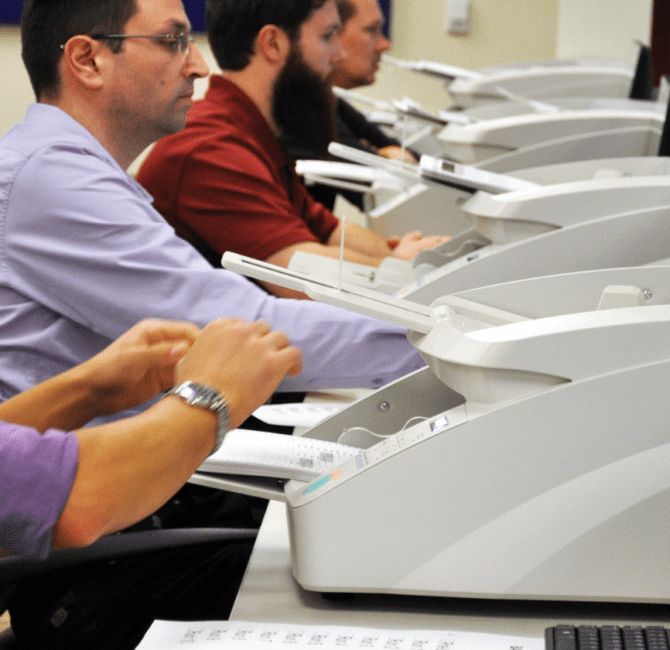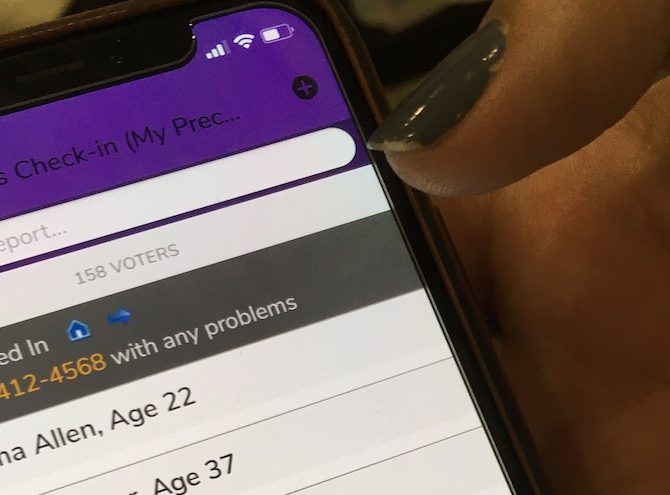Arizona Mystery: Did Cyber Ninjas Botch Another 2020 Presidential Recount Attempt?

(Photo Credit: https://www.youtube.com/watch?v=s4ZUHn-a3qs)
Did the Cyber Ninjas botch another attempt to recount Maricopa County’s 2020 presidential ballots—an attempt that, so far, has escaped wide media coverage?
It appears, at the very least, that a contract signed on July 28 by the Cyber Ninjas—the lead contractor in the Arizona Senate Republicans’ election review—and Dr. V.A. Shiva Ayyadurai, a Boston-based technologist and unsuccessful GOP U.S. Senate candidate, indicated that all 2020 election results would be tallied by August—and that deadline has now been missed.
An Arizona Republic report about Dr. Shiva, as he is known on social media, and the contract quoted Randy Pullen, the Senate review’s spokesman, as saying that Ayyadurai’s tally of the votes on digital images of 2.1 million paper ballots (created by vote-count scanners) was “sidetracked because the data was corrupted.” Pullen said “only 60 percent of the ballots were accessible.”
“We couldn’t do anything with it,” Pullen said. “The corruption was done at the county.”
County officials contest that claim. Megan Gilbertson, Maricopa County Elections Department communication director, said the department had confirmed that the ballot image data set given to the Cyber Ninjas was complete and accessible, and that the Senate’s latest subpoenas of county records did not seek another copy.
Ken Bennett, the Senate’s liaison to the audit and former Arizona secretary of state, said that he did not know if Ayyadurai’s firm had completed a ballot image audit. But the Senate expected to be briefed on September 13 about the Cyber Ninjas’ findings, he said, including, presumably, Ayyadurai’s ballot image audit.
Shiva, whose contract with the Cyber Ninjas includes a nondisclosure agreement, would not comment to intermediaries contacted by Voting Booth about the status of what would be the second full recount of Maricopa County’s official election records by the Cyber Ninjas. In July, the Cyber Ninjas completed a hand count of the presidential election’s paper ballots.
Sources with access to the Cyber Ninjas’ operation have told Voting Booth that its hand count results differed from the official election results by several thousand votes. The Senate then brought in machinery to recount the number of ballots—not their votes—to reconcile the discrepancies.
The Cyber Ninjas also have created their own set of electronic copies of the paper ballots, but those copies are not the same as working with official government records and data. The Cyber Ninjas’ images, like any original new data set, could be altered to support a biased or predetermined conclusion.
So far, the Cyber Ninjas have not released any of their data, analytics or the methodologies used in their review. They have, instead, dropped hints at prior legislative presentations that they believe Joe Biden did not win Arizona’s presidential election by 10,457 votes, the certified results.
The question of whether the Cyber Ninjas are continuing to bungle their review of 2020’s official election records—paper ballots, digital ballot images and cast-vote record or the official spreadsheet of every vote—is important because pro-Trump Republicans have been pushing for Arizona-style reviews in other swing states. Wisconsin Republicans, for example, are working with Ayyadurai.
A New Wave of Disinformation
In the meantime, a bait-and-switch is unfolding in pro-Trump media. Instead of relying on official—meaning government-generated—data that was used to decide the election’s certified outcome, pro-Trump activists are putting forth more stolen election narratives based on their own flawed data (gathered by interviewing voters) or statistical analyses based on more remote historical data they have selectively parsed.
For example, Arizona’s Liz Harris, an avid Trump supporter who has led an effort to canvass Phoenix neighborhoods to try to tie voter registrations to vacant lots, is now claiming that there were “173,104 lost votes” and “96,389 ghost votes” in Maricopa County’s 2020 presidential election.
Harris’ hunt for vacant lots whose addresses were on voter registrations, which became a premise for claiming massive fraudulent voting, was quickly debunked by Arizona reporters. In short, her team missed homes on properties, among other amateur sleuthing errors. Still, her newest election-theft claims were covered on pro-Trump media, such as Steve Bannon’s “War Room.”
A somewhat more sophisticated—but still erroneous—claim that has been gaining ground in pro-Trump media is from Seth Keshel, a retired Army officer. Keshel has looked at historic voter turnout patterns and voter registration data and claimed that there was no way that Biden could have received as many votes as he did in swing states—as recorded in the certified 2020 results.
What Keshel does not refer to, despite his lengthy explanations online, are the 2020 election’s official vote count records and related data sets. For example, he has not done what Benny White, a lawyer and longtime Arizona Republican Party election observer, has done, which is to analyze the official cast-vote record from 2020’s general election to detect actual voting patterns.
White’s analysis of Maricopa County’s 2020 cast-vote record found nearly 60,000 ballots with a majority of votes for Republican candidates but not for Trump. On these ballots, about two-thirds of otherwise loyal Republicans voted for Biden.
The pro-Trump activists, in contrast, have not grounded their assertions in the most precise, local and factual balloting data. Keshel, moreover, while claiming to be an expert analyst, does not acknowledge that COVID-19 prompted millions of voters to cast their 2020 presidential ballots in a different manner (early or by mail) than in 2016. (Pro-Trump legislators in red-run states have noted that trend and passed new bills in 2021 to roll back those expanded ballot-access measures.)
But the big picture is what the Election Integrity Partnership—a collaboration between the Stanford Internet Observatory, the University of Washington Center for an Informed Public, the Digital Forensic Research Lab and Graphika—called “the bad use of statistics to sow doubt in election results” in a recent report.
“In the wake of the 2020 election, the scale and irregular nature of voting data was weaponized to create statistical disinformation in order to undermine confidence in the result,” the EIP’s report, “The Long Fuse: Misinformation and the 2020 Election,” said. “A statistical model sets up an (often-flawed) expectation of how voting data should appear. Violations of this expectation occur, either due to chance (i.e., checking many locations), a mismatch between the data and model’s assumptions, or an inappropriate application of the statistical model.”
The report also cited Ayyadarai’s early claims that loyal Republicans would not abandon the presidential candidate at the top of their party’s ticket as an example of bogus analytics.
“In another example, Shiva Ayyadurai posted a fraught analysis, choosing variables that artificially created the impression that Trump did more poorly than expected in more Republican areas to suggest voting machines were changing votes to Joe Biden,” the EIP report said. “He further used the imposed negative slope to estimate purported switched votes, which fed into misleading narratives about Dominion voting [system] software.”
The EIP report said average voters could not “critique” technical-sounding disinformation, which makes it harder to debunk.
“These are [examples]… in which election data was weaponized to promote false narratives of widespread election fraud,” the EIP report said. “This tactic is particularly challenging, as it simultaneously creates the impression of widespread fraud while leveraging statistical analyzes that average citizens cannot be reasonably expected to critique.”
Dr. Shiva’s ‘Fraught Analysis’
The “fraught analysis” that Dr. Shiva presented at a November 2020 legislative hearing in Phoenix helped to launch the Arizona Senate’s review of the 2020 election. His testimony likely yielded two contracts with the Cyber Ninjas nearly eight months later, an associate of Shiva’s told Voting Booth.
One contract was to examine the digital images of returned absentee ballot envelopes to see if some envelopes lacked signatures, which are required before opening and counting the votes. Maricopa County’s official canvass reported on November 20, 2020, that there were 2,042 rejected ballot return envelopes in its presidential election.
The second contract was to tally the presidential results from 2.1 million ballot images, which, if completed, would be the second recount of 2020’s official election data by the Cyber Ninjas. The review spokesman, Randy Pullen, told the Arizona Republic that Shiva could not access 40 percent of those digital ballot image files—roughly 840,000 ballots—an enormous error rate.
Arizona’s Senate Republicans may soon hear if Shiva completed his ballot image audit. Or if the Cyber Ninjas botched their second attempt to recount all of Maricopa County’s presidential votes based on using official records—not shoddy evidence that’s fabricated by Trump supporters or, as the EIP report put it, “the bad use of statistics to sow doubt in election results.”






